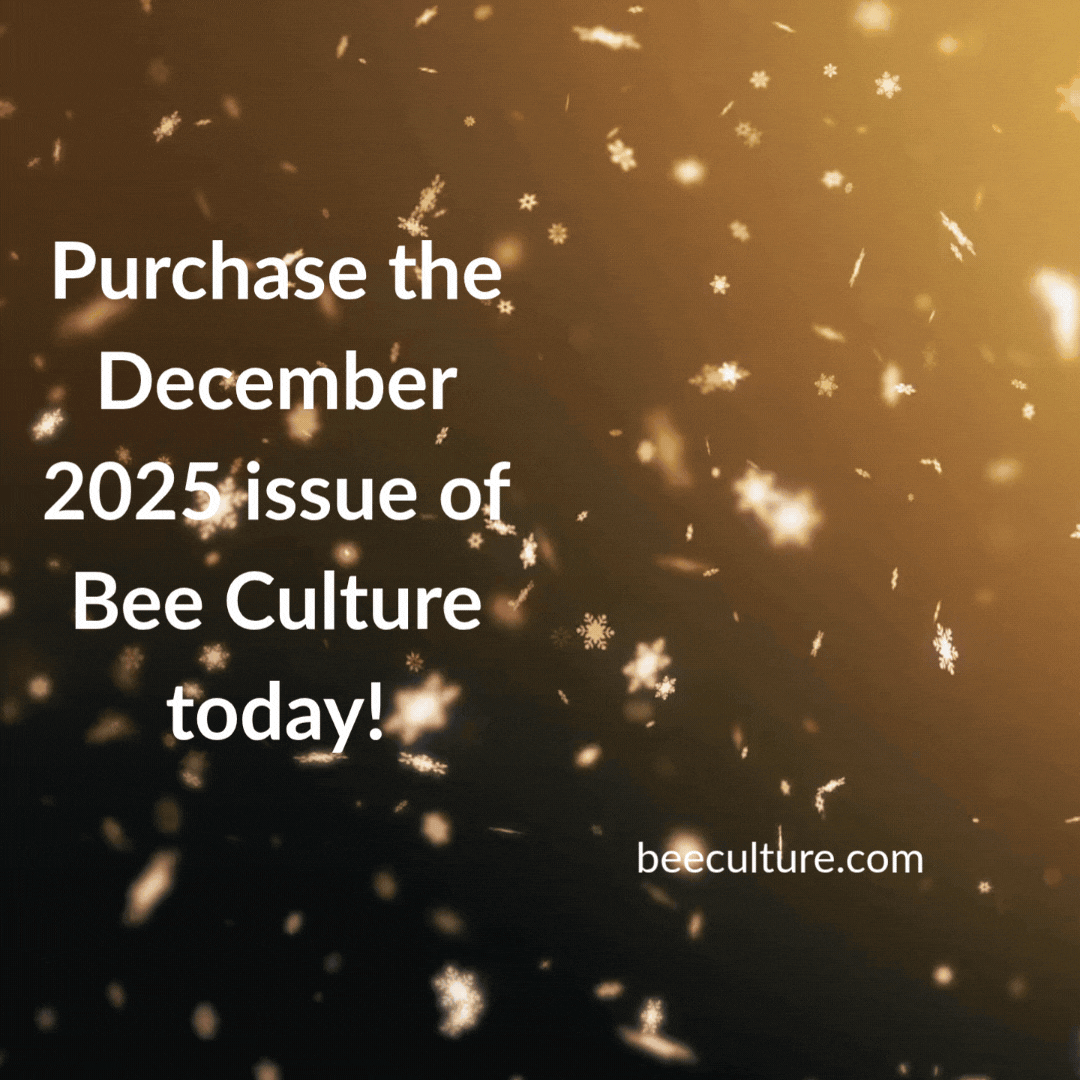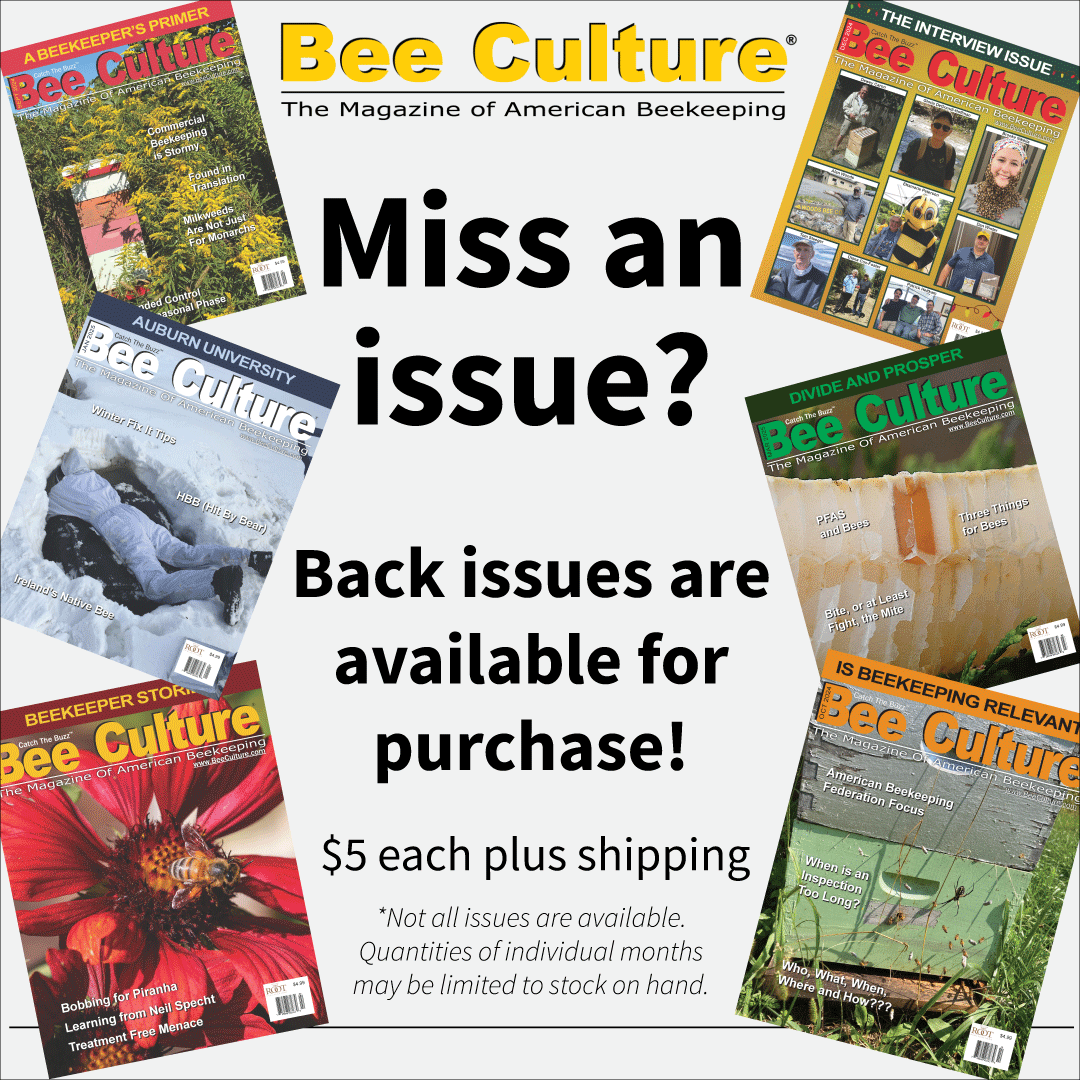Jack Thomas. Next Month.
It was, if I recall, right before Thanksgiving during my first year on the job that I got a call from somebody who wanted to put an ad in our magazine for the January 1987 issue and how would they go about it. They were selling Expeller Processed Soy Flour and Brewers Yeast for feeding bees in the early spring. They were new to me so there were forms to fill out and such, but in the January, 1987 issue, Mann Lake Bee Supply placed their first quarter page display ad with us.
Their business actually began back to 1984, when, because they were tinkering around as hobby beekeepers, needed to buy some supplies. Jack Thomas headed to one of the major suppliers and was met with a series of experiences so frustrating that it made him decide that it could be done better, and he was the guy to do it. So they opened a business in their garage attached to their home on Mann Lake, Minnesota, very near the town of Hackensack.
They ran that Brewers Yeast ad for a few months, then backed off a bit after getting a feel for how this was going to work. They put a smaller ad in ABJ for menthol crystals during the Summer for tracheal mite control and ran that for a bit too.
Over the next few months I talked occasionally with Jack Thomas about the beekeeping industry, beekeeping, advertising, who his competitors were and the like and got to know him fairly well.
Right off he got some pretty sharp business people working for him to keep the place up and running. Jack was an engineer so the technical part of the business worked well for him, but he knew the business side as well.
Over the years I got to know Jack, his wife and partner Betty and many of their employees fairly well. I’ve visited his operation in Hackensack, Minnesota several times for stories and for events they support for beekeepers. Each time the operation was more diverse, bigger, with more people and more business. They were definitely giving the other manufacturers (The A.I. Root Bee Supply business included) a run for their money.
The one thing that was absolutely in their favor was that they didn’t have a hundred-year legacy behind them that they could comfortably rest their laurels on that all their competitors had. All three of them, Dadant, Kelley and Root were established names in the industry, with decades of experience and tons of recognition, and complacency to match. That, and equipment that for the most part was as old and inefficient as the companies that ran them.
Since he had retired shortly before he opened his business he and Betty had both the time and financial grounding to take a long hard look at the industry they had now become a part of. And from that outside perspective looking in could see that their one big advantage was that they didn’t take a lot for granted, and could bring in new technology and new ideas without the burden of ‘this is how we’ve always done it’. This is still a not uncommon approach in many businesses.
This opportunity paid off over the years and the company grew faster than most realized. Today they have facilities in four different states, and are selling far more than simply beekeeping equipment supplies. They have captured a large share of the hobby, sideline and especially commercial business, both internationally and online, along with producing, or managing other products beekeepers need and use.
I think the best time I had with Jack and Betty was a whole day of just driving around their part of northern Minnesota. This is where, in case you didn’t know, the head waters of the Mississippi are located. We drove to the very outlet from a small lake, and I actually stepped over the Mighty Mississippi without getting my feet wet.
Over the years Jack had several joints replaced. Shoulders, hips, I forget all that he had replaced. It came to the point that when you met Jack at a meeting you got a fist bump rather than a hand shake. Every morning I have similar issues with hands and hips, so I can relate exactly to what he must have gone through, and all the time with a smile.
Five or six years ago they decided that their love of animals needed a place to be, so they built an animal shelter in Hackensack for dogs and cats and strays and rescues. It is truly a great place to visit – modern, efficient and if I was a stray, not a bad place to be.
Jack passed back in September, after a tough battle with cancer. He was 82. The company will go on of course, and, as of early October, I’m not sure what direction they will take. Betty, chipper as ever, is the Animal Shelter’s – it’s called Paws and Claws – guardian angel so will devote her time there I imagine.
Thirty four years isn’t yet a legacy, but this company has certainly made a mark, a positive mark on beekeeping in this country and to a degree much of the world. We wish them the best. Rest in Peace Jack. You did OK.
•
Stay tuned for our December number because it’s our annual Interview Issue! We’ve got some awesome folks lined up that our regulars have found and want to share. I’m going to be talking with Marina Marchese, the founder of The American Honey Tasting Society, and my co-author for our book The Honey Connoisseur. Marina has taken this tasting thing a long way since we put that book together, with studies in Italy and classes here in the U.S. Plus, she’s doing an article for us next month, too. It’s on pairing different honeys with different cheeses. If you do honey tastings at all, you need to expand your horizons past just a tiny spoonful and see what it tastes like – important, but not at all complete. You need to learn the secrets of what honey goes with what fruit, what crackers, what cheeses, what other foods that enhance both the honey and the food you are pairing it with. This article is a good start, but there is so much more to experience. Stay tuned for this one…it’ll be an eye opener and a mouth-watering way to spend a bit of good-tasting time.
Ann Harman will be talking to Sam Ramsey, the scientist who has turned around varroa research with a storm. His discovery was that varroa actually are feeding on the fat bodies of bees, not the hemolymph of the bees. This has, we are told, changed the way we are looking at control and more when it comes to dealing with this most awful pest. And if you didn’t make the EAS Banquet this year, you need to tune him in on YouTube for some of his musical presentations. His talent in entomology is equaled with a fantastic singing voice, and we were doubly treated by having him there.
Jim Tew is approaching this a bit differently. He’s going to tell us about the folks in his life that got him where he is today. Sort of Interview Retrospect. I am looking forward to meeting some of those people.
Jay Evans is going to be talking to Christina Grozinger from Penn State about her programs there. Penn State has, in case you aren’t aware a real gem in this researcher, with millions of dollars in grants, numerous awards and a boat load of research findings behind her, and many more to come. A not well-known member of our honey bee research community yet, I’m eagerly looking forward to what Jay finds out.
Kim Lehman, our Young Beekeeper advocate, is doing a follow up story on Mikaila Ulmer, From Austin, Texas. Kim did a story about her when she was nine some time ago and since then this young woman has gained national recognition as an entrepreneur and a philanthropist raising money to support bees. Kim keeps finding these exceptional young people through her work in the magazine and presentations, and I look forward to this second look she brings next month.
And there will be more. Jessica, Jennifer, Ross, Toni….they all know neat people they want to share. So, check us out next month for the Interview issue, unlike anything you’ll find anywhere else in the beekeeping industry.
•
Just a quick note on the ongoing shortage of epipens, again. FDA in late August again extended the shelf-life dates on existing pens just so some were available, but the shortage seems to be chronic. There is a generic pen available, if you can find it, but it’s not the same as the one you are used to because of delivery methods and dose recommendations. The immediate fall out is that most schools require kids to have one if they have severe allergic issues. And, even if parents can find one, the $700+ price tag means that’s not going to happen, and their kids are being kept out of school. If you, or someone in your family needs these, or you keep them handy for beeyard guests, keep an ear to the ground on the availability of these life-saving devices.
•
Just one last thought. Take a look at this month’s honey report. We looked at honey production by region this month, and compared to last year’s data taken at about the same time, and then at the final ERS Honey Report released earlier this year about last year’s production to make some educated guesses. Going out on a limb here, looking at this year’s data and last year’s, they seem to be similar, meaning, he adds carefully, the crop should be about the same. But it’s those top 10 producing states, and, actually the top five that set the standards. And they seem to be about the same as last year too, at least comparing our reporter’s data to the ERS data. That comes to just under 150 million pound crop, again. That’s only 20% or so of what we consume. We eat honey at a deficit. So far, pollination is protected from foreign intervention (and those prices keep inching up), and we aren’t importing bees, yet. Two out of three isn’t bad, but it’s not perfect, either.
•
It’s Thanksgiving time. All of us here want to wish you and yours the very best holiday season. It’s been a strange year, and it isn’t over yet, but stop for a moment and recall all the good things that have happened. And Thank You for being a part of our family this year. We are glad we can share some of what we do.









